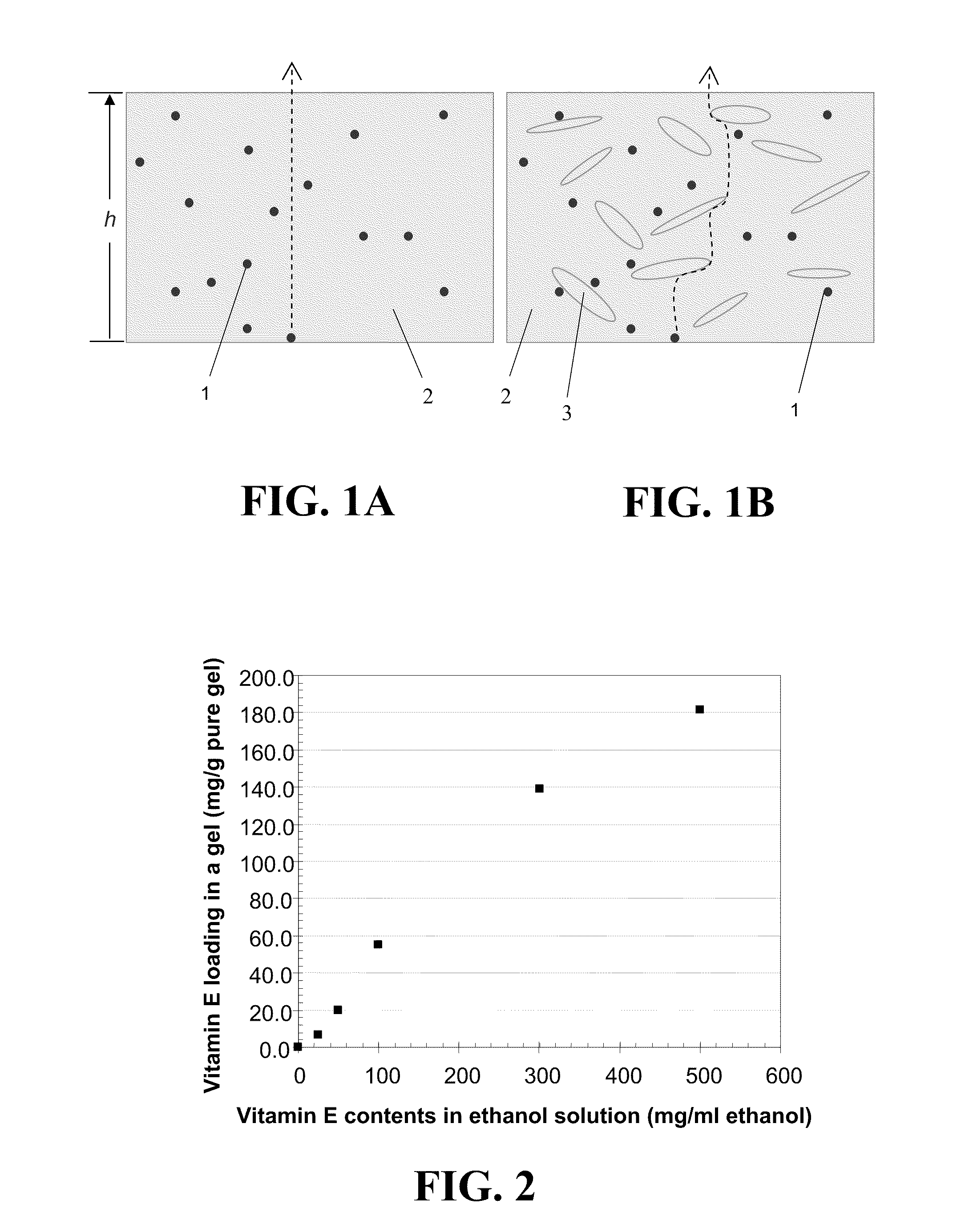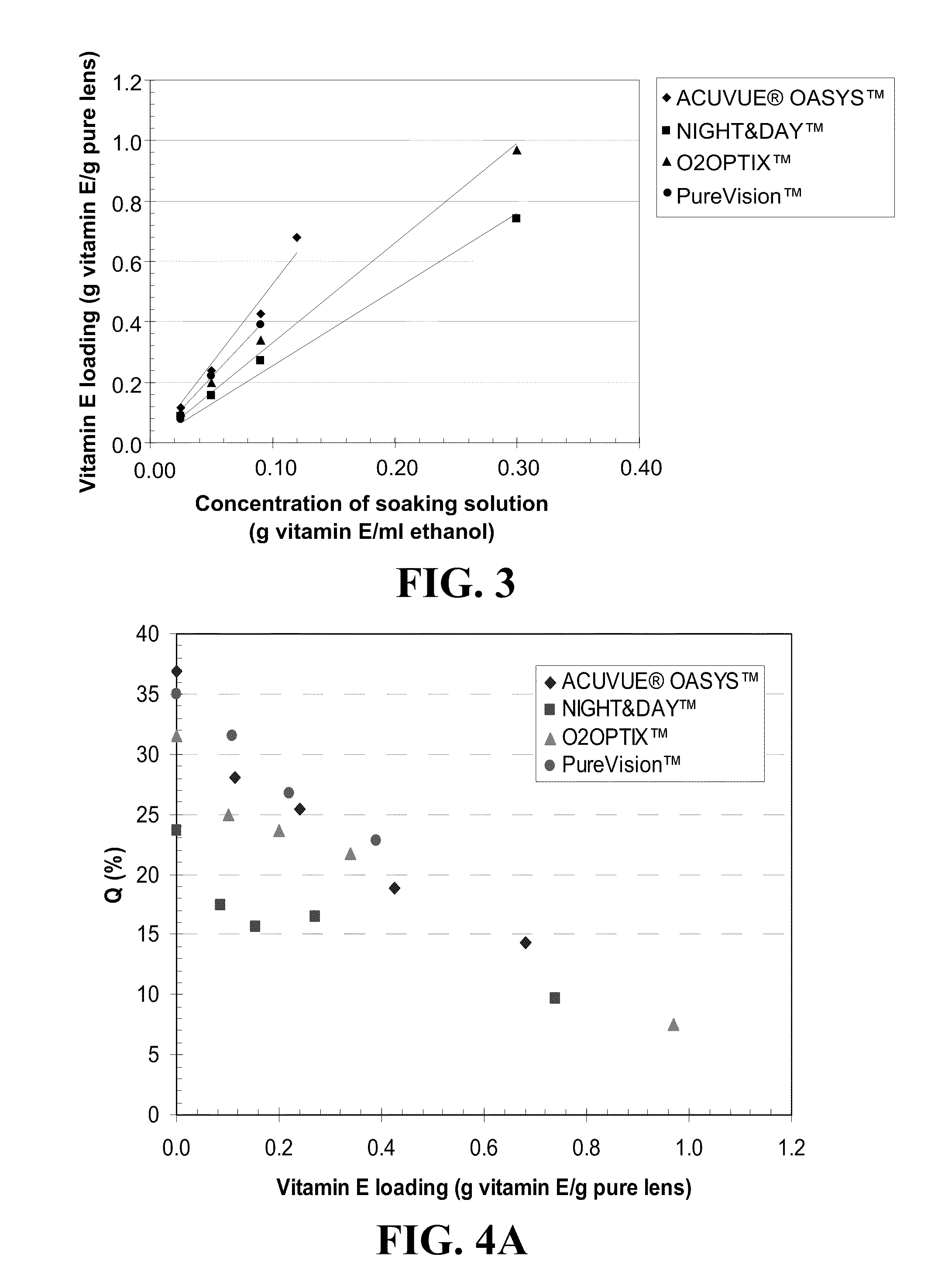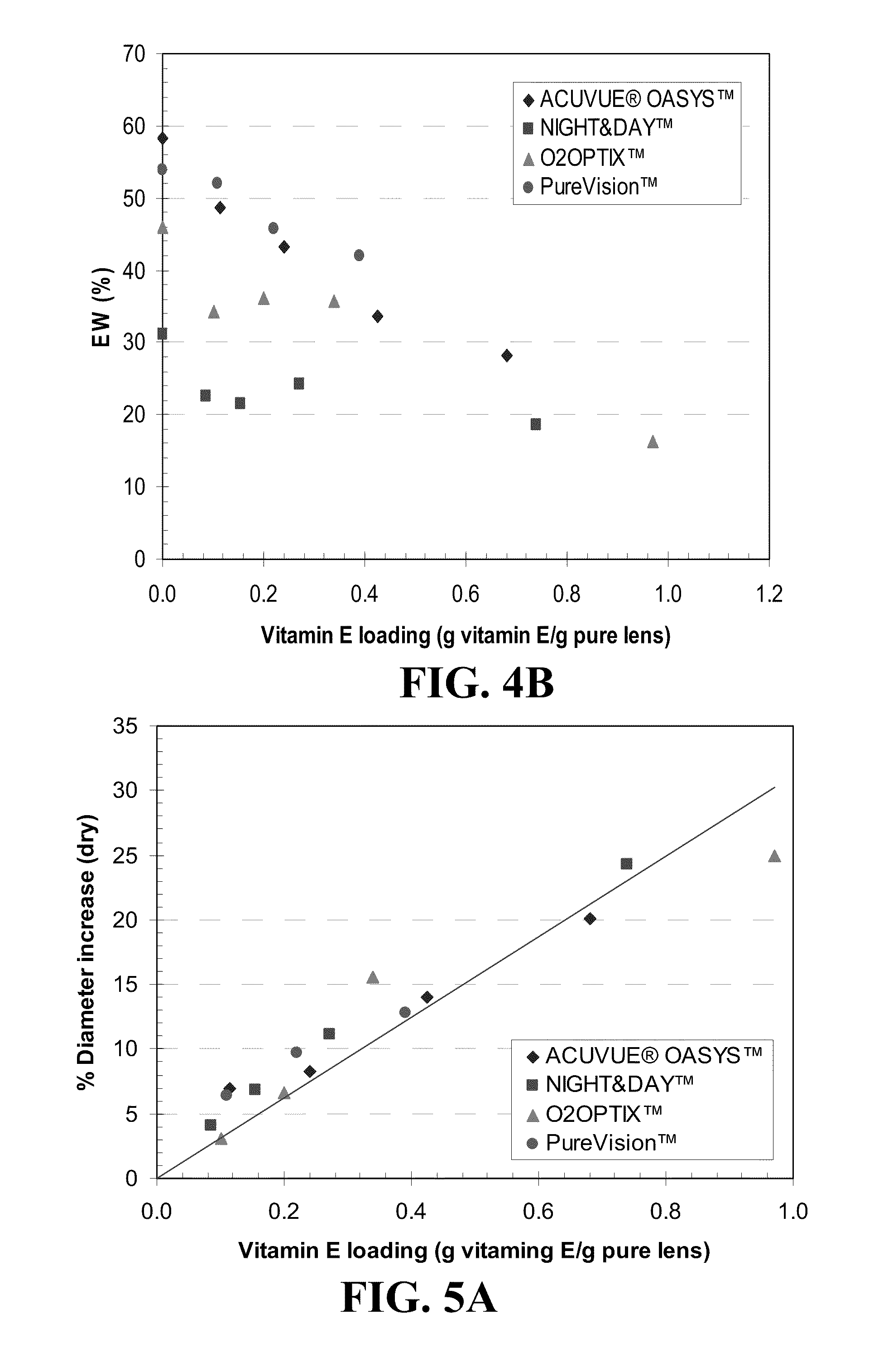Contact lenses for extended release of bioactive agents containing diffusion attenuators
a technology of diffusion attenuator and contact lens, which is applied in the field of contact lens for extended release of bioactive agents containing diffusion attenuator, can solve the problems of inability to meet the needs of patients
- Summary
- Abstract
- Description
- Claims
- Application Information
AI Technical Summary
Benefits of technology
Problems solved by technology
Method used
Image
Examples
example 1
Loading of Vitamin E in an Experimental Silicone-Hydrogel as a Function of Loading Concentration
[0076]Silicon-hydrogel contact lenses were prepared by the polymerization of a mixture of methacryloxypropyltris(trimethylsiloxy)silane (TRIS) (1 ml), bis-alph,omega-(methacryloxypropyl)polydimethylsiloxane (1 ml), N,N-dimethylacrylamide (DMA) (0.6 ml), Methacrylic Acid (0.6 ml), 1-vinyl-2-pyrrolidone (0.15 ml) and ethylene glycol dimethacrylate (EGDMA) (0.125 ml). The lenses were soaked in various concentrations of Vitamin E in ethanol until partitioning was complete between the solution and the lens. The uptake of Vitamin E per weight of lens is plotted in FIG. 2 as a function of the concentration of Vitamin E in ethanol. As can be seen in FIG. 2, the equilibrium loading of the lenses was proportional to the concentration of the Vitamin E in solution. A Vitamin E loading of up to 18 wt % of the pure silicone hydrogel was possible without any changes in the optical properties of the lens...
example 2
Loading of Vitamin E in Commercial Silicone-Hydrogel Contact Lens as a Function of Loading Concentration
[0077]Five commercial silicone contact lenses (diopter −6.50) as indicated and characterized in Table 1, below, were used. Loading of Vitamin E in a variety of commercial silicone-hydrogel contact lenses was carried out by dissolving Vitamin E in ethanol at various concentrations and soaking the lenses for a period of time for complete partitioning between the solution and the lens to achieve various loadings in the lens. The solvent was allowed to evaporate and the weight increase and diameter increase of the lens was measured as recorded in Table 2, below. As can be seen in Table 2, the lens absorbed Vitamin E up to about the mass of the lens. The lens diameter also increased with the Vitamin E loading.
example 3
Vitamin E Loading into Commercial Lenses
[0078]Vitamin E was loaded into lenses by soaking the lens in 3 ml of a Vitamin E-ethanol solution for 24 hours. Vitamin E-ethanol solutions of various concentrations were prepared by simply mixing Vitamin E and ethanol with vortex mixing for a few seconds followed by moderate magnetic stirring for several minutes. After the loading step, the lens was taken out and excess Vitamin E-ethanol solution on the lens surface was blotted with wipes and dried in air overnight.
[0079]Vitamin E loadings in lens of different initial concentration of Vitamin E loading solutions are shown in FIG. 3. Vitamin E loading has a linear dependency on the concentration of Vitamin E loading solutions. ACUVUE® OASYS™ and NIGHT&DAY™ have the highest and the lowest affinity for Vitamin E, respectively. The Vitamin E loaded lenses were transparent at all loadings.
TABLE 1Silicone containing commercial contact lens (dipoter −6.50) used in this study. (n = 6)WaterDrycontent...
PUM
| Property | Measurement | Unit |
|---|---|---|
| Time | aaaaa | aaaaa |
| Volume | aaaaa | aaaaa |
| Volume | aaaaa | aaaaa |
Abstract
Description
Claims
Application Information
 Login to View More
Login to View More - R&D
- Intellectual Property
- Life Sciences
- Materials
- Tech Scout
- Unparalleled Data Quality
- Higher Quality Content
- 60% Fewer Hallucinations
Browse by: Latest US Patents, China's latest patents, Technical Efficacy Thesaurus, Application Domain, Technology Topic, Popular Technical Reports.
© 2025 PatSnap. All rights reserved.Legal|Privacy policy|Modern Slavery Act Transparency Statement|Sitemap|About US| Contact US: help@patsnap.com



